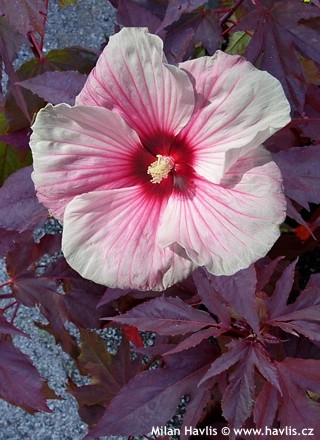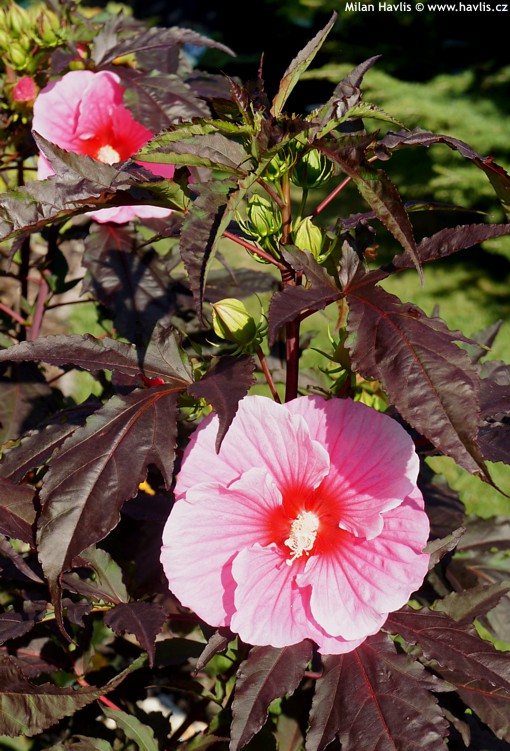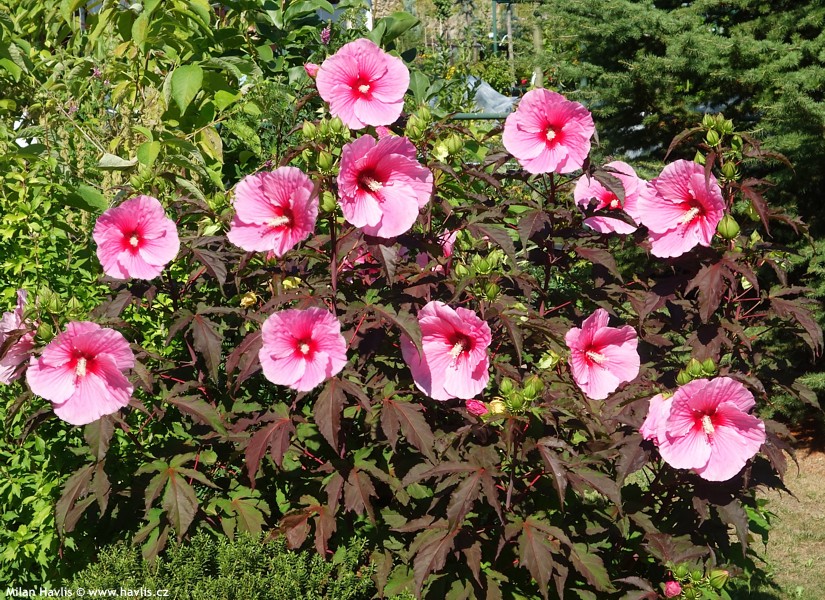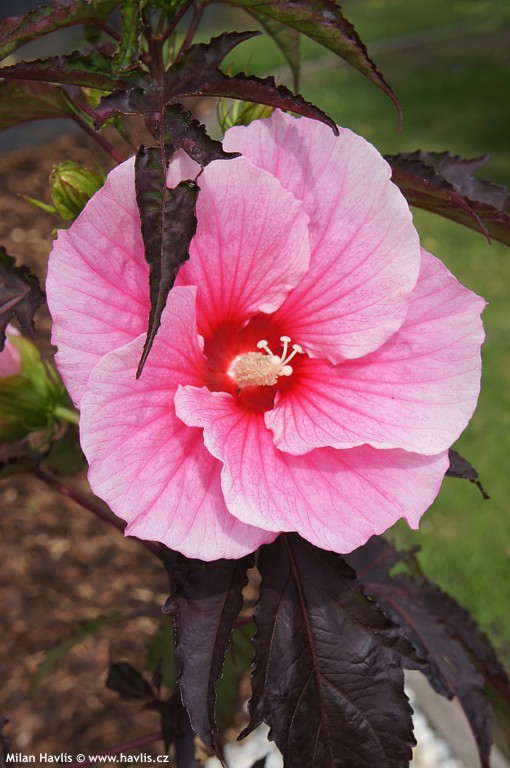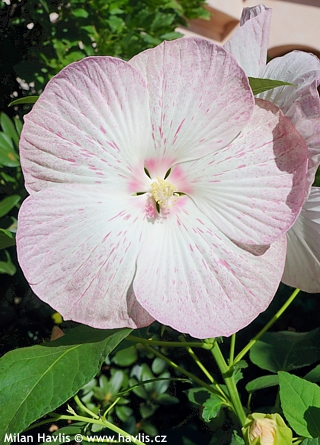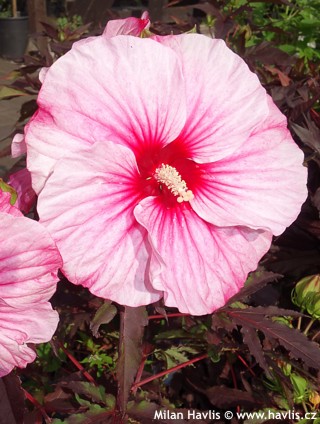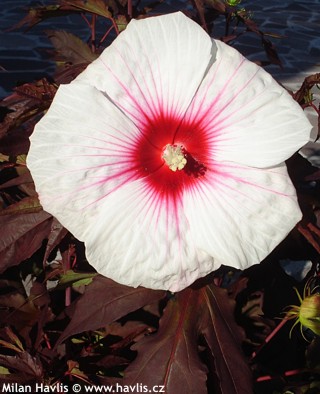Hibiscus x 'SUMMER STORM' swamp mallow, hardy hibiscus
Hibiscus
Swamp mallow and its hybrids have been sought after plants for the past few years now. They are perennials with sturdy stems that have large, tropically looking flowers.
Summer Storm is another modern variety of swamp mallow hybrid. It bears very large flowers – up to 20 cm across, light pink with rosy red veins and a striking burgundy red eye. They are borne on 60-100 cm long stalks from midsummer until early autumn. The leaves are very attractive, too, they are deeply lobed, dark purple red and look like giant replica of Japanese maple leaves. They turn fiery orange and yellow before they fall down.
The plant is dependent on regular water and feed supply. Use fertilizers with enough phosphorus for abundant flowering, or any other quick-release fertilizers where nitrogen is not predominant. Any fertilizing has to stop by end September.
For healthy growth and profuse flowering it needs a sunny location with a lot of moisture which can be achieved by good mulching. The soil has to be fertile and permeable, never let it dry out in summer. Hardy to about -30°C (USDA zone 5), probably a bit more. Cut back the plant only a few centimetres above ground level in spring. Mulching will help the plant retain moisture also in winter months.
Last update 17-06-2011

































